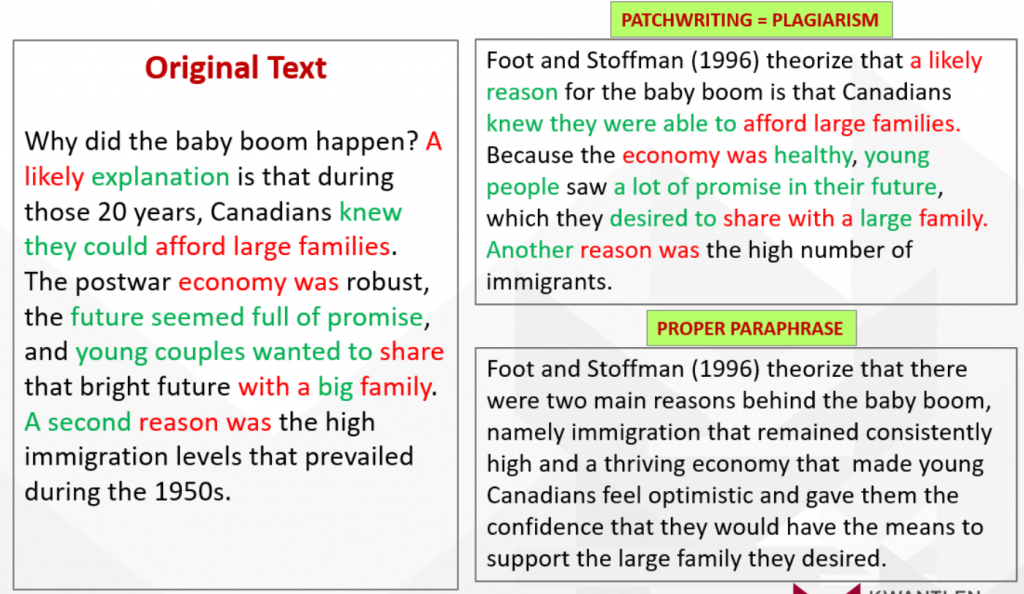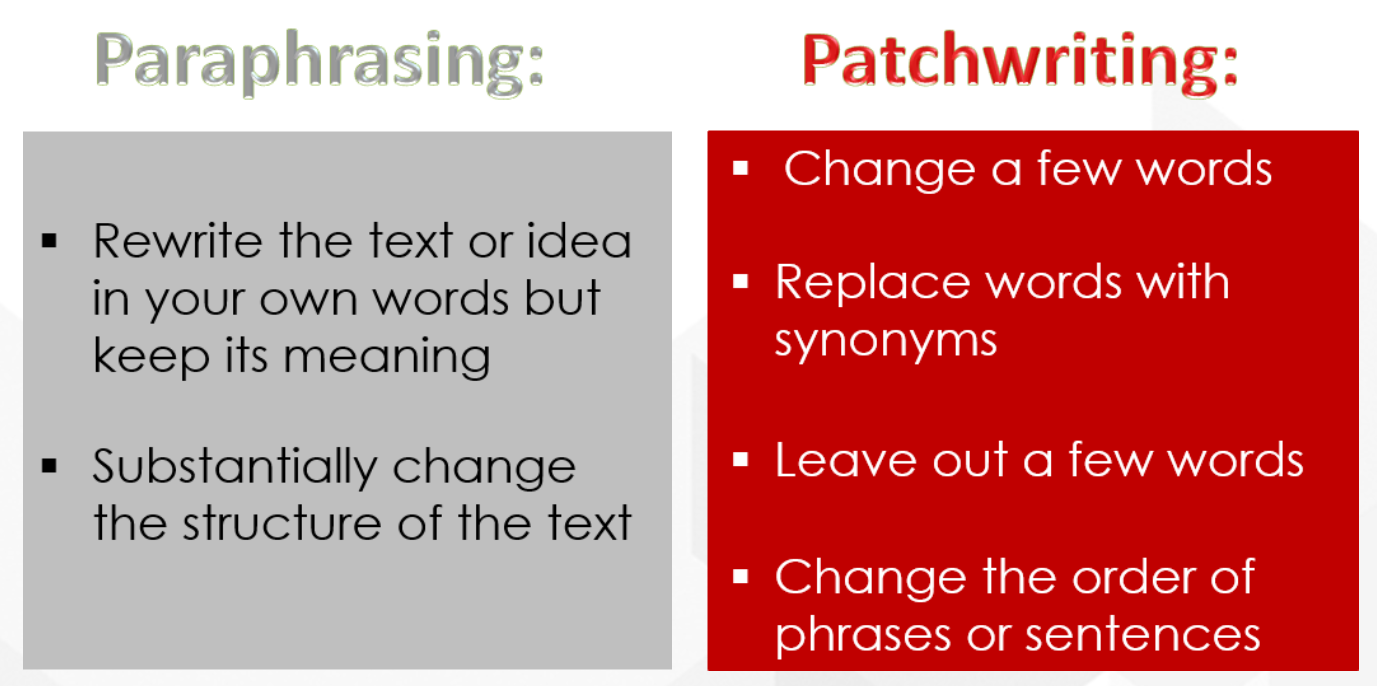17 Paraphrasing vs. Patchwriting
Learning Objectives
After completing this chapter, you will be able to
- define patchwriting
- differentiate between patchwriting and paraphrasing
Paraphrasing is an acceptable way to incorporate someone else’s ideas or research into your writing. Patchwriting, however, is NOT acceptable and can be considered a violation of academic integrity.
What is Patchwriting?
Watch this video from the MacPherson Institute[1] to understand what patchwriting is and why it is not acceptable in college assignments:
Identifying Patchwriting
Information in this section is adapted from Chapter 30: Paraphrasing vs Patchwriting in Academic Integrity by Ulrike Kestler (Kwantlen Polytechnic University Library)[2] which is made available by Pressbooks under a Creative Commons Attribution-NonCommercial-ShareAlike 4.0 International License, except where otherwise noted.
Patchwriting is NOT good paraphrasing. In patchwriting a writer attempts to paraphrase, but too closely imitates the sentence structure or vocabulary of the source (Howard, 1993, p. 233).[3].
Patchwriting is a common mistake, but it is NOT an accepted form of writing in academia; patchwriting is plagiarism, even if you cite your source.
Have a look at the original text below and compare it to the two restatements on the right.

As you can see, in the first example the writer uses several exact phrases of the original (shown in red) and several synonyms or phrases that are very close to the original (shown in green). In addition, much of the structure of the paragraph is the same. This is an example of patchwriting, and despite a proper citation being included, an instance of plagiarism.
In the second example, the writer uses their own voice to express the idea of the original text. Besides a few individual words that would be difficult to replace, such as “baby boom” and “Canadians”, the original has been entirely rewritten and the structure has been changed significantly. This is an example of proper paraphrasing.
Learning Check 1
Look at the rewrite below. What do you think? Is the restatement a proper paraphrase of the original text?
 |
|
Learning Check 2
Watch this video by Carlos Martinez[6] to see examples of patchwriting and paraphrasing and to learn more about how to identify and correct poor paraphrasing.
- MacPherson Insititute. (2020, June 20). Types of plagiarism - Patchwriting [video] . YouTube. https://www.youtube.com/watch?v=ub-fdTWskDs&t=22s ↵
- Kestler, U. (2021). Academic integrity. KPU. https://kpu.pressbooks.pub/academicintegrity/ ↵
- Howard, R. M. (1993). A plagiarism pentimento. Journal of Teaching Writing, 11(3), 233-46. ↵
- Pattison, T. (2002). Avoiding plagiarism: A guide for ESL students. Trent University. ↵
- USU Libraries & USU Center for Innovative Design & Instruction. (n.d.). Paraphrasing practice quiz. Utah State University. https://usu.instructure.com/courses/31801/quizzes/13501?module_item_id=63579. CC BY-NC 4.0. ↵
- Martinez, C. (2015, February 15). Patchwriting [video] . YouTube. https://www.youtube.com/watch?v=j9PUbe9yWv4 ↵


